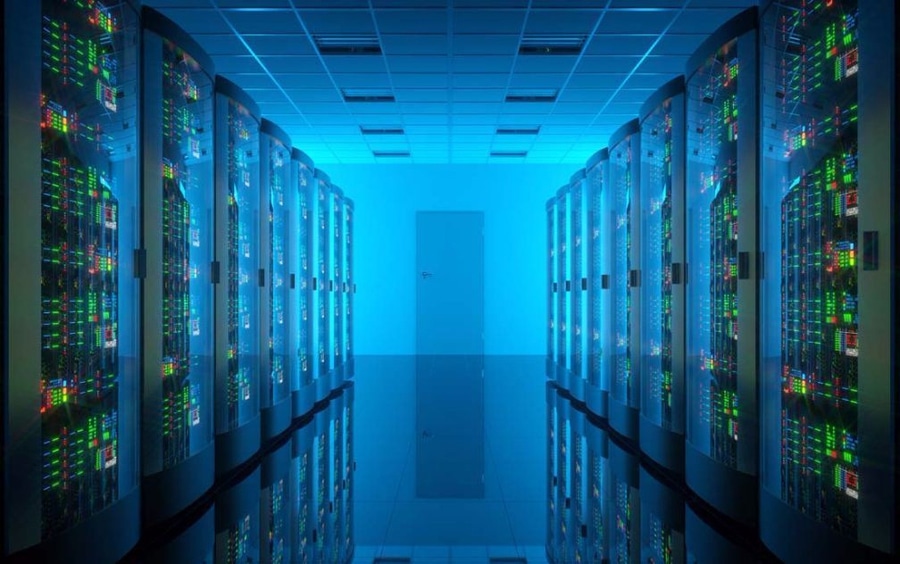
#Industry News
Data center surge protection
Protecting data centers from lightning strikes is no easy task.
Protection of power supply lines and maintenance of energy supply:
Continuity of power in a data center is paramount. Data centers consume huge amounts of energy, not just to run the IT systems, but also to cool equipment. But not all of it is properly protected, which means there is a rising need for greater protection.
Most of the damage caused by lightning strikes affect electrical and electronic components, via induced over voltages on the lines entering the building. Metallic pipes (water, gas, etc.) can also introduce surges, while the lack of equipotentiality between the various services or between the various earth connections, can cause issues when the electric earth and the so-called “clean” computing earth are separated.
The installation of Type 1 + 2 surge arresters can protect incoming power lines and sensitive circuits when lightning strikes, due to their low residual overvoltage, however the earthing of the metal pipes that go into the building will be necessary in order to create an equipotential system.
Type 2 surge arresters are also required for the protection of computer systems, inverters and sensitive equipment. These surge arresters must be installed in the various electrical cabinets present on site.
The internal protection of a data center must be carried out in accordance with the concept of lightning protection zones, LPZ 0A through to zone LPZ 3 as defined in IEC 62305-4. The lightning protection zone LPZ 0A is the zone where a direct lightning strike is possible through to the zone LPZ 3, which is where terminal equipment is located and where the residual overvoltage must be kept low for this equipment to remain safe. Various surge arresters should be installed to prevent the energy from a lightning strike from cascading through the electrical network.
Protection of data stored and processed in the data center:
Data Centers are vulnerable to physical and cyber-attacks. They are protected by anti-intrusion systems (cameras, presence detectors …) and sophisticated surveillance that must also be protected against lightning and surges. These systems are mostly located outside the buildings and because data center sites are often very extensive, their protection is complicated.
The communication of data from outside to inside is mainly made through fiber optic cable. This type of bond is immune to overvoltage, however, there are wired connections via multi-paired data cables of the Telecom type. These types of conductive connections are particularly sensitive to the indirect effects of lightning and to surges and should be protected by Type 2 surge arresters. Coaxial cable connections should be protected too, in accordance with the types of frequency signals, impedance, voltage and connector types used. Monitoring equipment, thermal cameras, identity control systems, security locks, fire detection and intrusion detection systems should also be protected. Grounding kits can be used to reduce overvoltage from all coaxial cables such as outdoor antennas and outdoor surveillance cameras. Type 2 surge arresters should be used for safety-critical equipment, which is often connected in multi-core cables. The data protection SPD for coaxial, Ethernet, RS485, RS232, RJ11, etc. must conform to IEC61643-21.
Protection of data center buildings:
High points, such as communication antennas or the chimneys of generating sets, have a high probability of being struck by lightning. In such an event the lightning current will flow to earth via any conductive elements, such as concrete reinforcement irons, metal structures or metal cladding. To protect against lightning, special attention must be paid to connect these high points to the ground by external conductors.
The installation of a lightning protection system as a mesh cage system with shock points or using early streamer air terminal is more than advisable. This must provide a protection radius that covers the entire surface of the building as well as other sensitive zones or surrounding buildings such as generators, cooling units, or ancillary buildings necessary for the proper functioning of the center.
Splitting the lightning current through multiple down conductors between high points (mesh circuit, active or passive lightning rods) and earthing system is good. This quickly grounds the current and reduces the necessary separation distance. A good spread of the lightning current through multiple conductors will reduce the induction effects of the conductors inside the building. This will reduce the induced overvoltage through the wiring of the building and lower the impact on surge arresters, prolonging their life.






